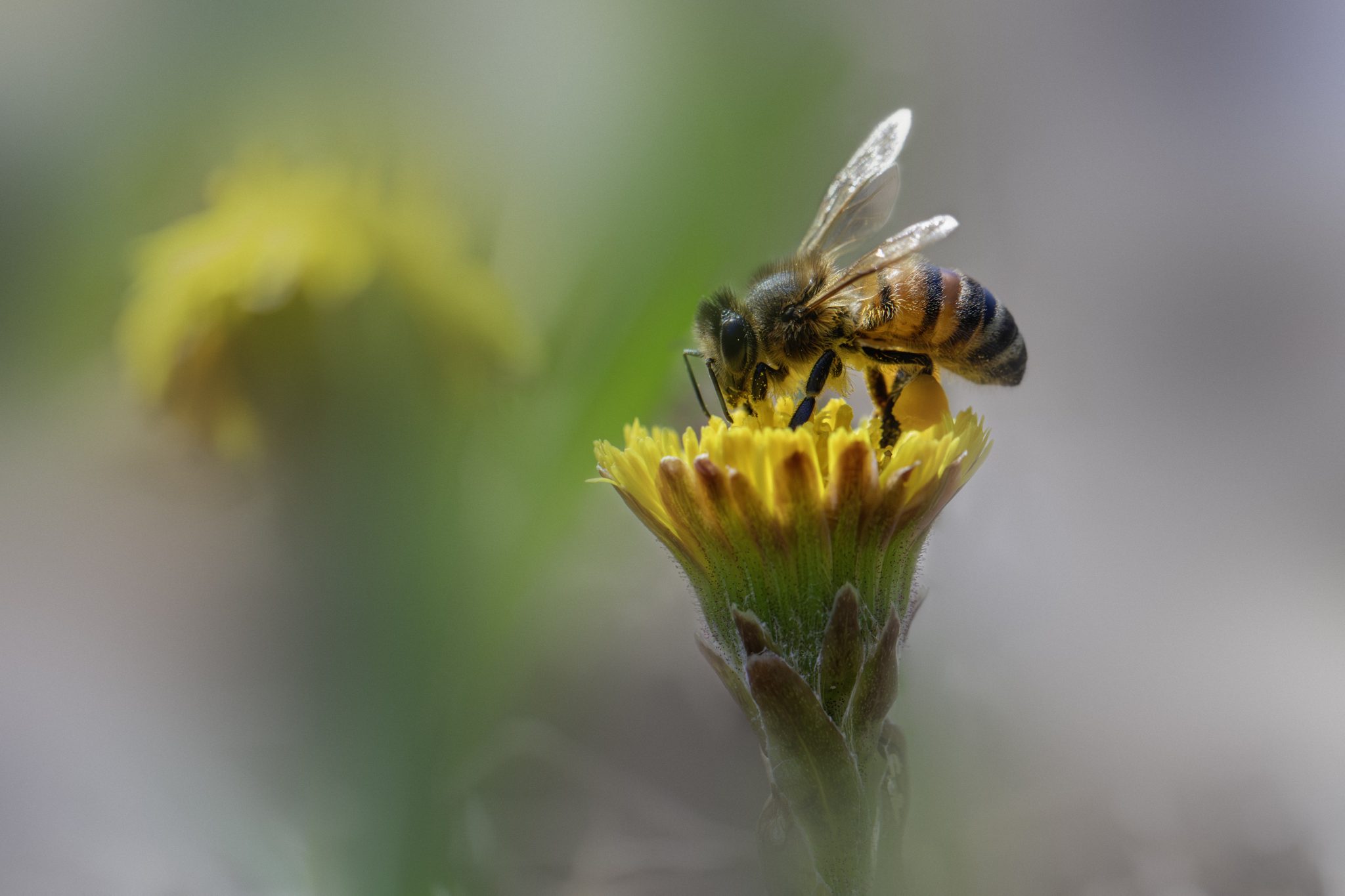🐝 Western Honey Bee (Apis mellifera)
The Western honey bee is perhaps the most well-known and economically significant bee species in the world. Native to Europe, Asia, and Africa, it has been introduced globally for its critical role in pollination and honey production.
🔍 Identification
- Size: About 12–15 mm
- Color: Golden-brown with dark brown or black bands on the abdomen
- Hair: Covered in fine hairs that aid in pollen collection
- Wings: Transparent with visible veins
- Stinger: Only females have one, and they sting only in defense
🏡 Nesting & Hives
- Naturally nest in hollow trees, rock crevices, or man-made hives
- Live in large colonies (up to 60,000 bees in summer)
- The hive consists of:
- One queen
- Thousands of female workers
- Male drones (during breeding season)
👑 Roles in the Hive
- Queen: The only egg-laying female; can lay over 1,000 eggs per day
- Workers: All female; perform all tasks including foraging, feeding the queen and larvae, cleaning, hive defense, and temperature control
- Drones: Males whose only role is to mate with a new queen
🍯 Products from the Hive
- Honey: Made by converting nectar and storing it in wax honeycombs
- Beeswax: Used to build honeycomb structures
- Propolis: Resinous substance collected from tree buds for sealing cracks
- Royal jelly: Special food for developing queens
🌸 Diet & Pollination
- Feed on:
- Nectar (carbohydrate source)
- Pollen (protein source)
- One of the most important pollinators for wild plants and agricultural crops
- Responsible for pollinating fruits, vegetables, nuts, and flowers
🔁 Life Cycle
- Egg → larva → pupa → adult
- Worker bees live for 4–6 weeks in summer, longer in winter
- Queens can live several years
- New queens emerge and leave the hive for a mating flight, then establish new colonies
🛡️ Defense & Behavior
- Defend their hives if disturbed
- Workers can sting once (and die after), while queens can sting multiple times
- Use the “waggle dance” to communicate the location of food sources
⚠️ Conservation Concerns
- Threatened by:
- Pesticides
- Habitat loss
- Climate change
- Diseases (e.g., Varroa mite, Nosema)
- While not endangered, their decline affects entire ecosystems and global food security
🌟 Fun Facts
- Can fly up to 24 km/h (15 mph)
- Have a highly developed social structure and communication system
- A single bee produces about 1/12th of a teaspoon of honey in its lifetime
- Recognize human faces and remember floral patterns
🧭 Summary
The Western honey bee (Apis mellifera) is far more than just a honey producer—it’s a keystone species essential to biodiversity and agriculture. Their complex social behavior, incredible navigational skills, and vital role as pollinators make them fascinating and indispensable members of the natural world. Protecting honey bees means protecting ecosystems and our food supply.
Visited 44 times, 1 visit(s) today
Views: 452
Subscribe to the newsletter:
